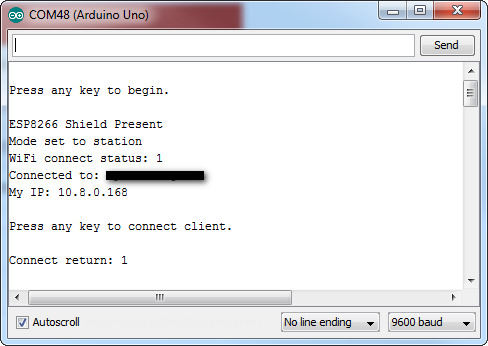

Learn how to put the ESP8266 into deep sleep mode: To wake up the ESP8266 from deep sleep, GPIO16 should be connected to the RST pin. GPIO16 can be used to wake up the ESP8266 from deep sleep. Most of the ESP8266 development boards have a built-in LED. ESP8266 ADC – Read Analog Values with Arduino IDE, MicroPython and Lua.You can learn how to use analog reading with the ESP8266 with the following guide: If you’re using a development board like the ESP8266 12-E NodeMCU kit, the voltage input range is 0 to 3.3V because these boards contain an internal voltage divider. The maximum input voltage of the ADC0 pin is 0 to 1V if you’re using the ESP8266 bare chip. That GPIO is called ADC0 and it is usually marked on the silkscreen as A0. The ESP8266 only supports analog reading in one GPIO. GPIO4 and GPIO5 are the most safe to use GPIOs if you want to operate relays. You can read this article that investigates the state and behavior of each GPIO on boot. The following GPIOs output a HIGH signal on boot:Īdditionally, the other GPIOs, except GPIO5 and GPIO4, can output a low-voltage signal at boot, which can be problematic if these are connected to transistors or relays.

This may be problematic if you have relays or other peripherals connected to those GPIOs. There are certain pins that output a 3.3V signal when the ESP8266 boots.

The ESP8266 can be prevented from booting if some pins are pulled LOW or HIGH. So, these pins are not recommended to use. GPIO6 to GPIO11 are usually connected to the flash chip in ESP8266 boards. LabelĬonnected to FLASH button, boot fails if pulled LOWĬonnected to on-board LED, boot fails if pulled LOWĭebug output at boot, boot fails if pulled LOWĬontinue reading for a more detailled and in-depth analysis of the ESP8266 GPIOs and its functions. The pins highlighted in red are not recommended to use as inputs or outputs. The ones highlighted in yellow are OK to use, but you need to pay attention because they may have unexpected behavior mainly at boot. The pins highlighted in green are OK to use. The following table shows the correspondence between the labels on the silkscreen and the GPIO number as well as what pins are the best to use in your projects, and which ones you need to be cautious. For example, D0 corresponds to GPIO16 and D1 corresponds to GPIO5. One important thing to notice about ESP8266 is that the GPIO number doesn’t match the label on the board silkscreen.
Esp8266 serial port 0 gpio pdf#
We’ve put together a handy PDF that you can download and print, so you always have the ESP8266 diagrams next to you:ĭownload PDF Pinout Diagrams » ESP8266 Peripherals Download PDF with ESP8266 Pinout Diagrams


 0 kommentar(er)
0 kommentar(er)
